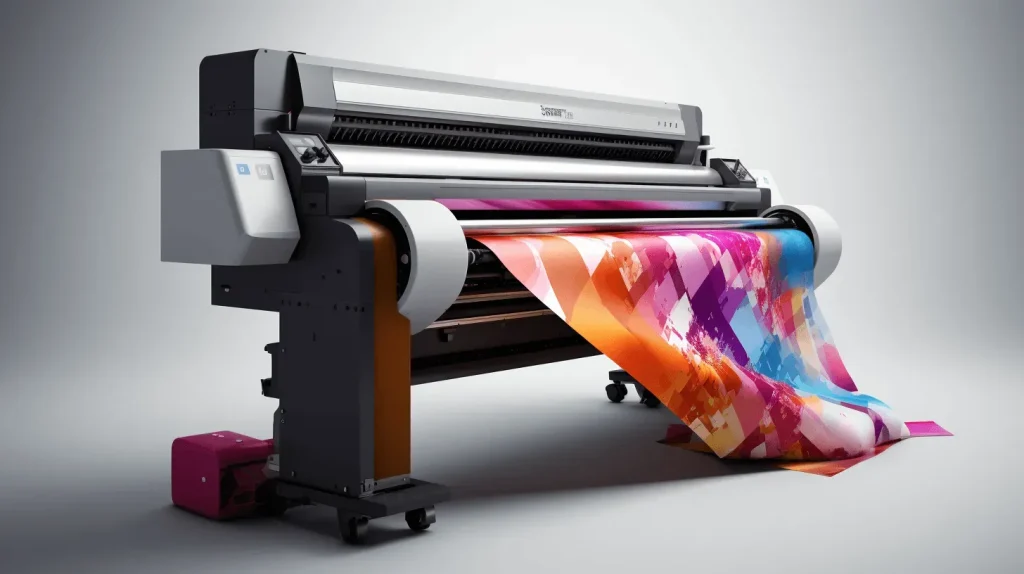DTF printing, or Direct-to-Film printing, is transforming the landscape of textile printing with its innovative approach and exceptional outcomes. This advanced printing technique allows designs to be transferred from a specially coated film to fabric, utilizing a unique blend of heat and pressure to create vibrant prints. One of the standout benefits of DTF printing lies in its versatility, enabling it to be used on a wide variety of fabrics, including cotton and polyester, without compromising quality. Moreover, the DTF printing process ensures high-resolution results that stand out with remarkable color fidelity. As we delve deeper into DTF printing technology, you’ll discover its numerous applications, advantages, and how it can elevate your printing projects.
Also referred to as Direct-to-Film printing, this modern method has gained traction in the textile industry for its efficiency and precision. The DTF printing process boasts a remarkable ability to achieve stunning designs by transferring images from film to fabric smoothly using heat applications. One of the key advantages of utilizing this printing technology is its environmental friendliness, as it employs water-based inks that maintain quality while being safe for the planet. The potential applications for DTF printing are vast, providing solutions across fashion, promotional items, and beyond. Understanding the core aspects of this technique can unlock new opportunities for businesses and artists alike.
Understanding the Fundamentals of DTF Printing
At its core, DTF printing, or Direct-to-Film printing, is a specialized method that allows for the transfer of vibrant designs onto various fabrics. The process begins with creating a digital artwork that is printed onto a unique PET film using high-quality water-based inks. This film acts as a carrier for the design, ready to be transferred to the final garment. As the film is printed, a layer of adhesive powder is also applied and then cured with heat, which is vital for ensuring that the ink bonds effectively to the fabric when pressed.
What sets DTF apart from traditional printing methods is its flexibility regarding materials. It can cater to a wide range of fabrics, including cotton, polyester, and blends. This versatility means that businesses can produce customized apparel for multiple applications, from fashion to promotional merchandise. Furthermore, DTF printing’s approach to using water-based inks contributes to its environmentally friendly image in an industry increasingly aware of sustainability.
The Advantages of DTF Printing
DTF printing offers numerous benefits that make it a preferable choice for designers and businesses alike. One significant advantage is the high level of detail achievable in prints. The technology allows for sharp, vibrant images that can capture intricate designs with remarkable color fidelity, making it ideal for businesses aiming for high-quality outputs. Notably, the durability of DTF prints is a game-changer, as they withstand numerous washes without fading or cracking, ensuring that custom designs maintain their appeal over the long term.
Another compelling benefit is the cost-effectiveness of DTF printing, especially for small businesses. Unlike traditional screen printing methods that often require substantial initial investments and setup, DTF printing allows for smaller print runs at a lower cost. This capability is essential for startups and boutique businesses focusing on custom products, enabling them to provide unique offerings without overextending their budgets.
Exploring DTF Printing Applications
The versatility of DTF printing finds applications across various industries, illustrating its significant market potential. In the fashion sector, for instance, it has transformed the way custom apparel is produced, allowing businesses to cater to diverse needs ranging from personalized gifts to team uniforms. Its efficiency in producing vibrant, multi-color designs makes DTF printing an attractive option for on-demand fabric merchandising, significantly surprising end-users with its quality and turnaround time.
Moreover, DTF printing is increasingly utilized in creating promotional items, where branding visibility is paramount. Companies can now offer custom-designed merchandise that effectively communicates their brand identity, enhancing marketing efforts. The ability to print on multiple substrates means businesses can diversify their product offerings, making DTF an invaluable tool for promotions, corporate gifts, and event memorabilia.
Technological Innovations in DTF Printing
Recent advancements in DTF printing technology are paving the way for improved production efficiency and print quality. These developments not only enable faster production speeds but also enhance the capabilities of DTF printers, making them increasingly user-friendly. Innovations in ink formulations are particularly noteworthy, as they promise superior color reproduction and adhesion, addressing some of the initial challenges faced by earlier models.
As technology continues to evolve, businesses can expect to leverage these advancements to offer even more compelling products. For instance, newer DTF printers are being designed with integrated features that allow for automatic film feeding, reducing manual labor and increasing output. Such technological strides ensure that DTF printing remains a competitive and viable option in the ever-evolving market of custom printing solutions.
Overcoming Challenges in DTF Printing
Despite its many advantages, DTF printing is not without challenges. Technical expertise is required for optimal results, particularly regarding heat settings and pressure application during the transfer process. Mistakes in these areas can severely impact print quality, leading to subpar outcomes and unhappy customers. Therefore, it is crucial for operators to receive proper training and gain hands-on experience to navigate these technical demands successfully.
In addition to technical challenges, the upfront costs associated with purchasing specialized DTF printers and heat presses can deter some businesses from adopting this method. However, this investment should be viewed alongside the long-term cost savings and increased revenue potential that DTF printing offers through custom, high-quality products. As the technology becomes more accessible, the fear of high equipment costs may diminish, paving the way for broader adoption.
The Future of DTF Printing
The future of DTF printing looks promising, with ongoing advancements pointing towards broader application and increased efficiency. As more businesses recognize the benefits of DTF technology, we can expect to see a significant uptick in its usage across various sectors, particularly in custom apparel and promotional merchandise. This trend is indicative of a shift towards personalized experiences, reflecting consumer demand for unique products.
Moreover, as sustainability continues to take center stage in manufacturing, DTF printing, with its use of water-based inks and reduced waste, is set to align more closely with these eco-friendly practices. This alignment may attract environmentally conscious businesses and brands looking to reduce their carbon footprint while still delivering high-quality, custom printed products. Overall, as technology progresses and consumer habits evolve, DTF printing is positioned to play a key role in the future of textile printing.
Frequently Asked Questions
What is DTF printing and how does it work?
DTF printing, or Direct-to-Film printing, is a textile printing technique where designs are first printed onto a specialized film and then transferred onto fabric using heat and pressure. This process uses vibrant, water-based inks that bond securely with various materials, making it ideal for achieving high-resolution prints.
What are the benefits of DTF printing compared to traditional methods?
The benefits of DTF printing include versatility across different fabric types, high-quality and detailed outputs, durability that withstands washes, and cost-effectiveness, especially for small businesses. Unlike traditional methods, DTF printing allows for smaller print runs and intricate designs without heavy investment.
What materials are used in the DTF printing process?
In the DTF printing process, high-quality water-based inks and specially coated films are essential. DTF printers are designed specifically for this technique, ensuring optimal adhesion and vibrant outputs on fabrics such as cotton, polyester, and blends.
What are some common applications for DTF printing?
Common applications for DTF printing include custom apparel for sports teams, schools, and events, as well as promotional items like branded merchandise. Its ability to produce intricate designs quickly makes it valuable for businesses looking to enhance personalization options.
How does DTF printing ensure durability and wash resistance?
DTF printing ensures durability and wash resistance through a specialized bonding process that uses heat to activate adhesives, which secure the ink to the fabric. This results in prints that resist fading, cracking, or peeling even after multiple washes.
What challenges should one be aware of when using DTF printing technology?
Challenges in DTF printing include the need for precise heat settings and pressing times to achieve quality results. Additionally, while the overall setup costs are lower than screen printing, investing in the necessary DTF equipment may still represent a significant initial expense.
| Key Aspect | Description |
|---|---|
| Understanding DTF Printing | A process of transferring printed designs from a film onto fabric using heat and pressure. |
| Advantages | Includes versatility, high quality, durability, and cost-effectiveness. |
| Recent Developments | Technological advances are improving print quality and speeding up production, leading to market growth. |
| Practical Applications | Used in fashion, apparel, and promotional items, offering customization for various industries. |
| Challenges | Technical challenges in print quality and costs of equipment pose obstacles for some businesses. |
Summary
DTF printing is a revolutionary technique that is transforming the textile printing industry with its impressive versatility and high-quality outputs. By utilizing a process that bonds vibrant water-based inks onto various fabrics, DTF printing not only meets the demand for detailed and durable designs but does so in a cost-effective manner. As businesses increasingly seek innovative custom printing solutions, the continued developments in DTF printing technology are likely to expand its application, making it a go-to option for fashion, promotional items, and more.



